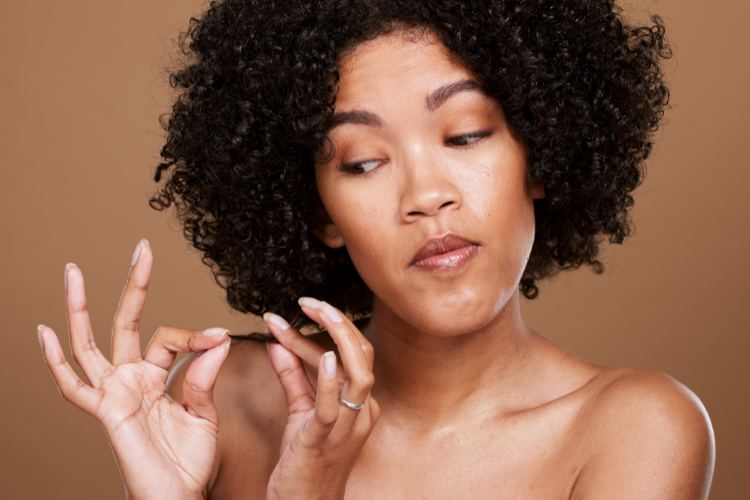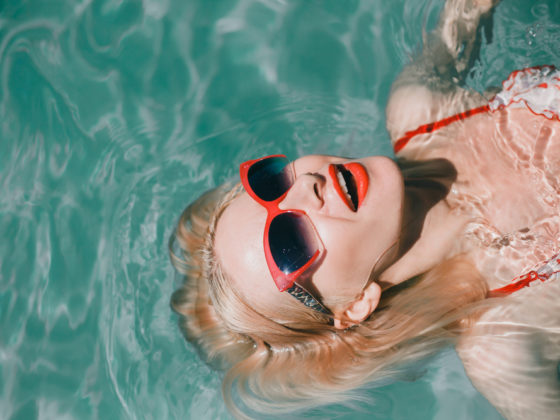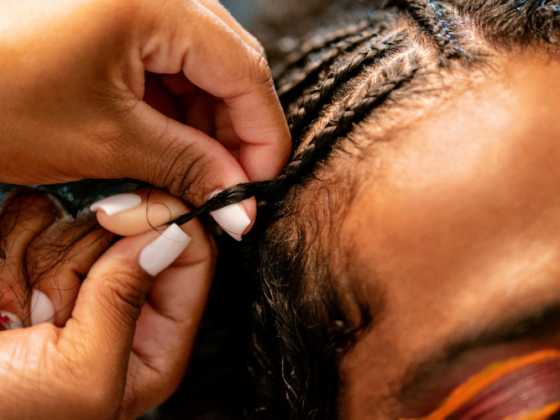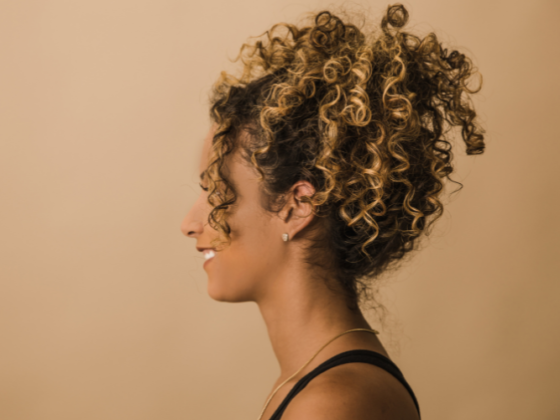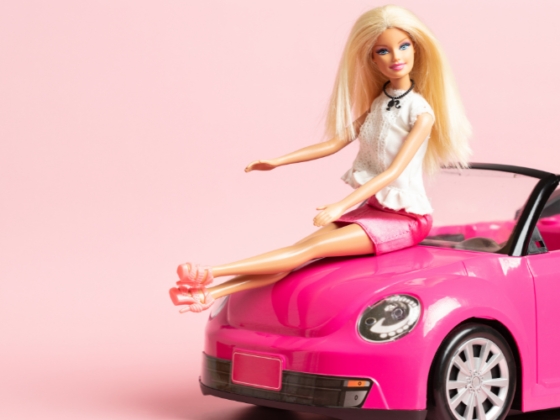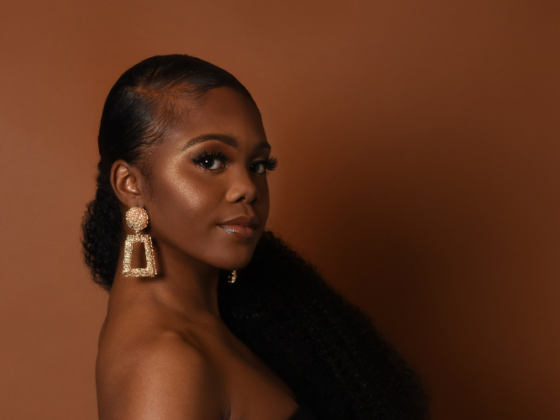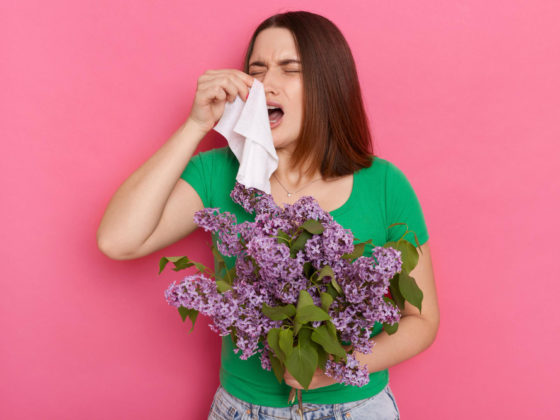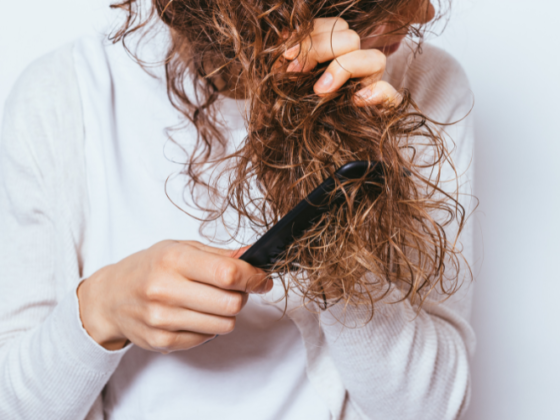Our hair has the ability to bend, stretch and spring back to its regular form.
Hair elasticity isn’t just the measure of how flexible hair is, it also is the ability to withstand all the styling we do to our hair.
Think about how many times you touch your hair, tie it in a ponytail or bun or just sleep on it.
Hair goes through a lot of rough usages.
In this post, I’m going to talk about what hair elasticity is and why it is important to us.
I will also explain how you can increase your hair elasticity and improve the quality and health of your hair.
Let’s dive in, yo.
This post contains affiliate links, meaning I may make a commission at no extra cost to you if you decide to click on a link and purchase something. Click here to read the full disclaimer.
What is hair elasticity?
Hair elasticity refers to the ability of the hair strands to stretch, bend and twist and then return to their original shape without breaking or experiencing damage.
Hair elasticity is basically the measure of the hair’s flexibility and resilience.
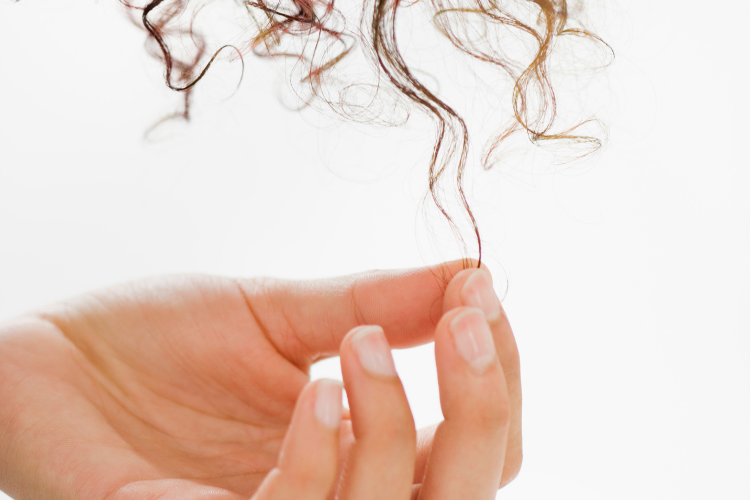
When hair has good elasticity, it can withstand various styling practices. Think – brushing, heat styling, and chemical treatments without becoming overly brittle or prone to breakage.
It’s super important to have good hair elasticity because this means that hair can endure the daily stresses we subject it to.
What is good elasticity in hair?
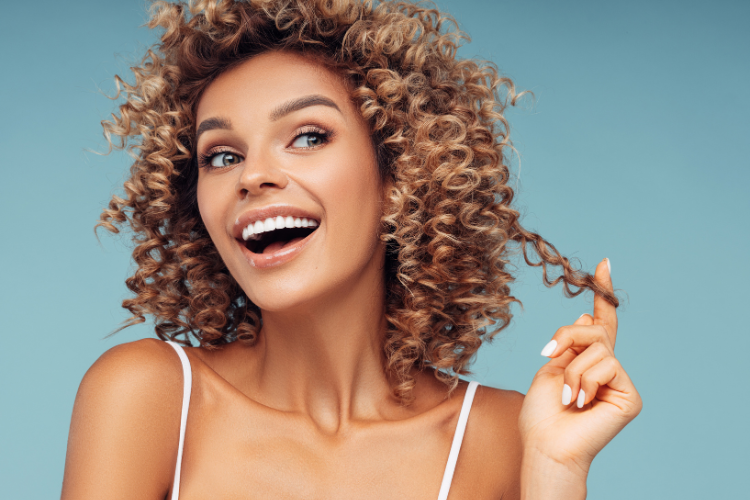
Think of using a rubber band. When the rubberband is fairly new, no matter how you tug or stretch it, it’s going to come back to its original form.
But think of an old rubber band that’s all hard and stiff – if you stretch it too much, it breaks.
Now, how do we apply this to hair?
Here are some characteristics of hair with good elasticity:
- Stretch and resilience: When hair with good elasticity is gently stretched, it will extend without breaking and then spring back to its original length. This means that the hair’s protein structure is intact and can withstand tension.
- Bounce and movement: Hair with good elasticity has a natural bounce and moves brilliantly. It doesn’t appear stiff or rigid when styled.
- Resistance to breakage: Hair with good elasticity is less prone to breakage and damage caused by regular brushing, styling, or chemical treatments. This means that hair will tolerate all of this without snapping or developing split ends.
- Retains moisture: Hair with good elasticity can absorb and hold onto water properly, which helps keep the hair hydrated and prevents it from becoming dry and brittle.
- Maintains Curl Pattern: For people with curly hair (like me), good elasticity means the hair strands can stretch and then bounce back to their original pattern without losing form. This allows the curls to maintain their shape without becoming limp or frizzy – I’ll explain this in a bit.
How to test for hair elasticity?
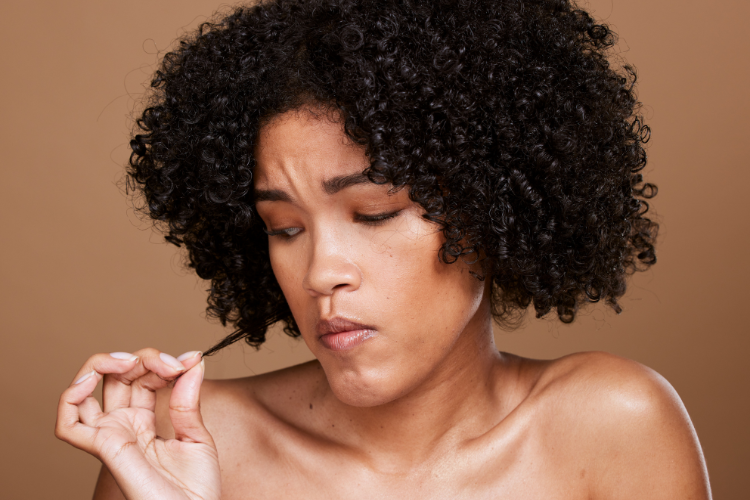
Okay, now that I’ve covered the definition of hair elasticity and explained what it means to have good elasticity, we all know that hair elasticity is something to be coveted.
So, how do we test for it?
You can perform a simple hair strand test to assess the elasticity of your hair. Feel free to repeat this a few times (because some hair strands may be damaged and that will skew your results).
- Start with a clean and dry hair strand: Select a single strand of hair that is representative of your overall hair condition. Ensure that the strand is dry and free from any styling products or treatments.
- Gently stretch the hair: Hold the strand securely between your thumb and index finger, closer to the root end. Slowly and gently stretch the hair strand by pulling it in opposite directions. Pay attention to the resistance and the degree of stretch it can endure.
- Observe the hair’s behavior: A hair strand with good elasticity will stretch and then spring back to its original length once released. It should not break or remain stretched out. This indicates that your hair strand is flexible and has the ability to withstand tension without excessive damage. Yay!
- Assess the results: Based on your observations, determine the elasticity of your hair. If the hair strand easily stretches and returns to its original shape without breaking, it indicates good elasticity. If the strand breaks or remains stretched out, it may indicate low elasticity or potential damage.
However, please note that individual strands of hair on your head may have different elasticities – and that’s okay.
That’s why I suggest doing this test a few times to get a comprehensive idea of your hair elasticity.
Also, please keep in mind that we all have different hair textures and hair types. Even hair porosity does influence elasticity.
I highly recommend talking to a professional hairstylist or trichologist (hair and scalp specialist) if you have more questions or doubts about the health and quality of your hair – they’ll be able to help you out better!
How can I improve my hair elasticity?
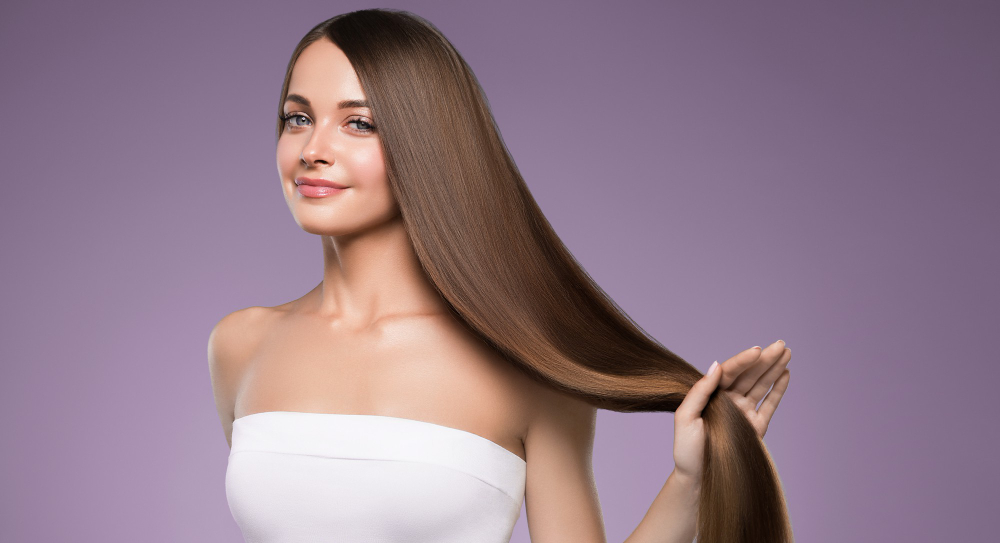
Okay, let’s say your hair didn’t quite make the cut and you’ve now figured out that your hair may be damaged or its health isn’t very optimal.
That’s okay. Don’t stress.
I’ve damaged my hair a lot in the past years by frequent dying or straightening – it’s salvageable.
Hair heals and recovers – that’s the good news.
And this is why I feel confident to help you increase your hair elasticity because I’ve done it myself.
So, here’s how you can improve your hair elasticity:
1. Deep Condition your hair regularly

As a person with incredibly curly hair who keeps traveling to different places with humidity, I can tell you that deep conditioning is super important.
Deep conditioning helps nourish and moisturize the hair – improving its hair elasticity.
When searching for deep conditioners, look for ones that contain ingredients like protein, keratin, or amino acids because they strengthen the hair and promote elasticity.
Now, I’ve talked about this product several times, but I’ll say it again: I love, love, love Arvazallia Hydrating Argan Oil Hair Mask and Deep Conditioner.
It’s a product sent from the Gods.
It’s completely sulfate and paraben free. It is made for damaged hair or hair that’s been through a lot. It works for every hair type.
And my hair has never felt this soft, bouncy, and smooth. It’s restored my hair so much and I use this product frequently.
I highly recommend deep conditioning at least once a week especially if you have natural hair or your hair is damaged. My hairdresser told me that my hair has never looked more healthy and it just built up my confidence so much.
I couldn’t live without this product.
Here’s how you deep-condition:
- Start with clean, damp hair: Begin by washing your hair with a gentle shampoo to remove any dirt, oils, or product buildup. Gently squeeze out excess water from your hair, leaving it damp but not dripping wet.
- Choose a deep conditioner: Select a deep conditioner that suits your hair type and addresses your specific concerns. Look for products that contain moisturizing and nourishing ingredients like natural oils, shea butter, or keratin. I will only recommend the Argan Oil Deep Conditioner.
- Apply the deep conditioner: Take a generous amount of the deep conditioner and evenly distribute it through your hair, focusing on the mid-lengths and ends. Use your fingers or a wide-toothed comb to ensure the conditioner is evenly applied and coats each strand.
- Massage and detangle: Gently massage the deep conditioner into your hair and scalp, stimulating circulation and ensuring the product is evenly distributed. I only use my fingers.
- Allow the conditioner to sit for a while: Let the deep conditioner sit on your hair for the recommended time specified on the product label. I prefer waiting for 30 minutes as that’s how long my patience holds up.
- Rinse thoroughly: After the recommended time has passed, rinse your hair thoroughly with cool or lukewarm water. Ensure that all the conditioner is rinsed out to avoid leaving any residue that could weigh down your hair.
The frequency of deep conditioning depends on your hair’s needs. I do it once a week and it suits me. But I recommend trial and error and seeing what works for you.
2. Do a protein treatment
There is a difference between moisturizing your hair and giving it a protein treatment.
I love how Jayme Jo explains it, do watch this video:
Protein treatments are formulated with proteins like keratin (what our hair is mainly composed of), hydrolyzed proteins, or amino acids.
These proteins have smaller molecular sizes that penetrate the hair shaft and fill in the gaps.
Without getting too technical – when our hair is weak and damaged, these protein treatments fill in the gaps and repair the damaged protein structure by depositing proteins into the hair shaft.
That’s how it helps hair become stronger and increase its elasticity.
I only recommend CER-100 – it’s extremely light on the pocket, works on all hair types, and is super easy to use. I’m not exaggerating.
Read the reviews of the product in the link above and you’ll see how this miracle product has worked for hair that’s super damaged.
It’s an AMAZING product.
Please follow the instructions to do the protein treatment. Use it just like a conditioner.
Wash your hair with a shampoo and rinse off the shampoo. Dry your hair slightly so it’s damp and not soaking wet. Apply the protein treatment and wait for 10 minutes and then wash off.
That’s it. That’s all you have to do.
3. Avoid using heat tools
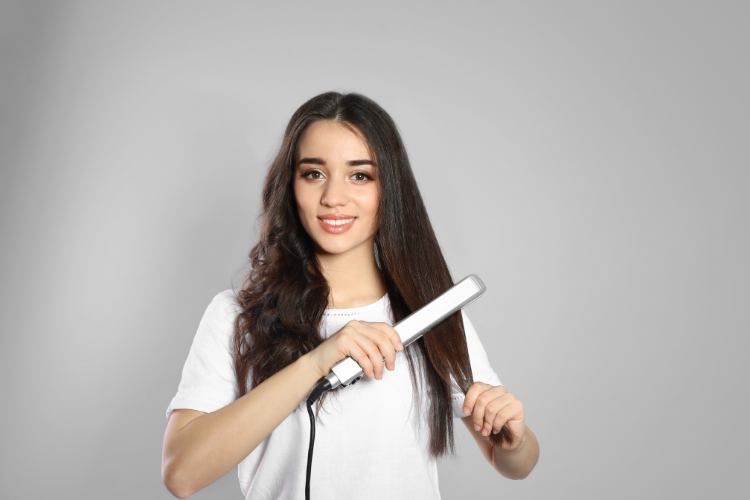
I can honestly say that not damaging my hair further has helped my hair regain its elasticity and strength back.
This means not using heat.
As a curly girl, it’s so hard to NOT use heat. But I put my diffuser on the cold-air setting and I manage.
Heat damages hair – period.
Minimize the use of heat tools like flat irons, curling irons, and blow dryers but if you can stop it permanently – even better.
Even if you have to use heat, please, please, please use a heat protectant for your hair.
Here’s one I genuinely love and used to use when I applied heat to my hair. It has argan oil, so I love the product even more.
4. Be gentle when detangling
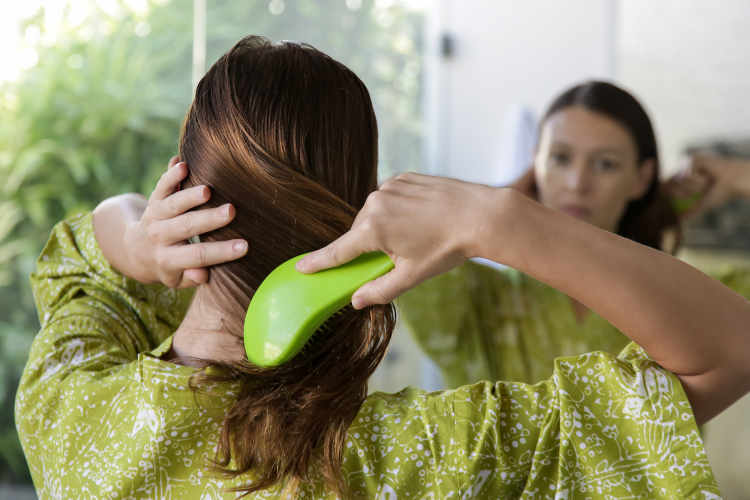
Do not brush your hair or towel dry your hair roughly.
Be very gentle with your hair when it’s wet. Hair absorbs water and swells up when it’s wet – making it prone to breakage.
So, detangle gently with your fingers using a lot of conditioner so your fingers slip through easily.
And use a wide-toothed comb starting from the ends and slowly working your way up.
5. Protect your hair from the environment

Your hair is susceptible to sunlight and wind.
Wear a hat when you go outside or wear a protective hairstyle and cover your hair with a scarf.
We are so particular to wear sunscreen but even our hair needs protection – UV rays from the sun do damage hair.
So, as much as possible, reduce your hair’s exposure to sunlight.
6. Drink lots of water and eat a balanced diet

This is the best way to help your hair become healthy from the inside.
I learned this when I was trying to cure my acne.
No matter what creams and lotions I used, I had to finally work on my acne from the inside – and that meant figuring out what foods caused my acne.
Our skin and hair try to communicate with us by telling us that something ain’t right.
So, if your hair doesn’t look healthy, try to heal it from the inside. This means, drinking a lot of water, and eating foods that provide essential nutrients like biotin, vitamin E, and omega-3 fatty acids.
7. Minimize chemical treatments
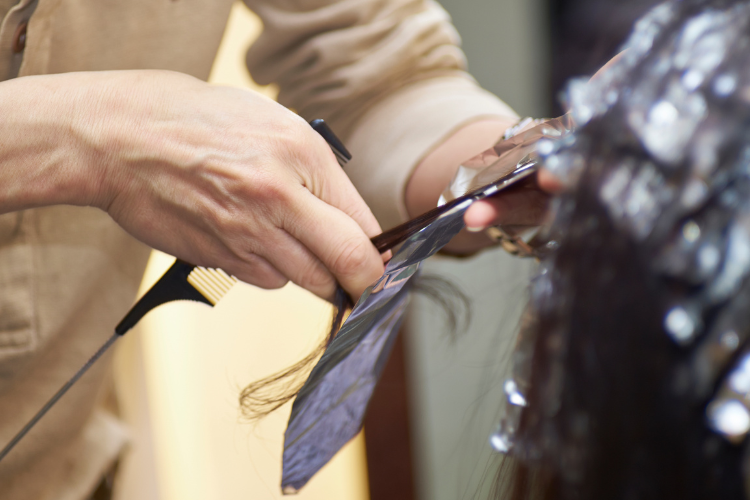
As much as possible, avoid excessive chemical treatments like perming, relaxing, or coloring.
This weakens hair and reduces elasticity.
If possible, give your hair a break from these treatments every few months and opt for gentler more natural alternatives.
8. Trim off split ends
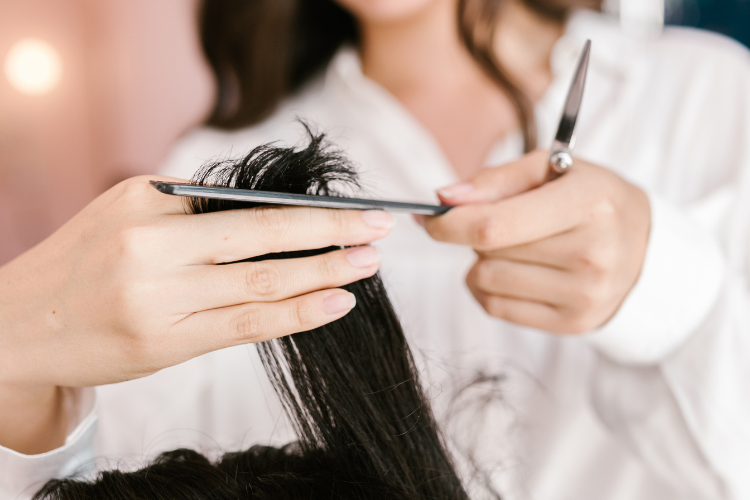
Split ends do not grow.
They cannot be healed.
Once the hair is split, the split ends only tend to rise up and damage the rest of the hair strands – this is why it’s crucial to remove split ends and prevent further damage from traveling up the hair shaft.
So, get regular trims once in 6-8 weeks.
And minimize split ends by taking care of your ends.
Conclusion
Hair elasticity takes time to get better.
You’re basically improving your hair health, so please be patient.
It takes a lot of time and consistent care. Watch how your hair responds to treatment and if you have any issues regarding your hair, please consult a professional hairstylist.
Here are some more posts that will help:
- How to Protect Your Hair from Chlorine Without a Swim Cap
- Dry and Frizzy Curls? 13 ways to fix dry, frizzy hair
- Is it Bad to Touch Your Hair a Lot + How to Stop Touching Your Hair
- When Can I Wash My Hair After Giving Birth? How to Do It
- Pre Pooing with Jamaican Black Castor Oil – Everything to Know
- 5 Reasons Why Your Hair is Sticky After Swimming + How to Fix It
- 9 Genuine Reasons Why Your Hair is Always Tangled in the Back
- Can You Bleach Permed Hair? Everything You Need to Know!
